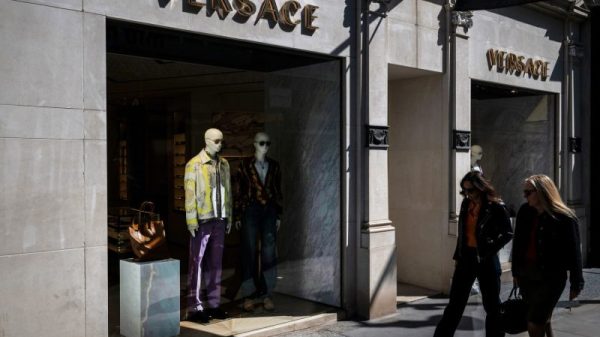
The Markets in Crypto Assets Regulation (MiCA), due to take effect this year, is the European Union’s comprehensive crypto law. The legislation promises legal certainty, compliance challenges and global implications.
MiCA’s primary goal will be to establish a unified rulebook for regulating crypto-asset markets. The ‘implementation phase’ of MiCA is from entry – June 2023 when the rules first came into force – until the date of full application in December 2024.
In January, the European Securities and Markets Authority (ESMA), the top regulator of the European Union’s financial markets, opened a feedback window on guidelines under MiCA regulation.
Industry Feedback on MiCA
The MiCA regulation requires fiat-backed stablecoins to be backed by a liquid reserve that has a 1:1 ratio. In response to this many industry players are keen to stress that the rules have the potential to impact the crypto market within the EU positively.
Increasing confidence among investors in the stability and reliability of stablecoin offerings. “MiCA regulations have introduced a comprehensive framework for regulating stablecoins, bringing them under the purview of EU financial laws. This has led to increased regulatory oversight and scrutiny of stablecoin issuers and operations,” James Wo, Founder and CEO of investment firm DFG, who previously worked at Ethereum Classic Labs as a Founder and Chairman, told Cryptonews.
The MiCA regulations aim to promote market stability, limit contagion risks and improve investor protection by imposing stringent requirements on stablecoin issuers, such as capital requirements, transparency standards, and consumer safeguards.
MiCA Raises the Barrier to Entry
Wo goes on to explain that with MiCA regulations being implemented this in turn has raised the barrier to entry for new stablecoin issuers, leading to market consolidation as smaller players may struggle to comply with the regulatory requirements, resulting in the dominance of larger and more established stablecoin issuers in the market.
“The implementation of MiCA regulations in the EU has also had implications beyond its borders, as stablecoin issuers operating in other jurisdictions may need to comply with similar regulatory standards to access the EU market. This has prompted stablecoin issuers worldwide to reassess their compliance strategies and adapt to the evolving regulatory landscape,” explains Wo.
MiCA’s Compliance Requirements Hinder Innovation
Being forced to comply with MiCA requirements could hurt small start-ups especially due to the strict regulations which makes seeking legal expertise costly.
“The MiCA regulations do also have their downsides, notably with the potentially negative impact they can have on innovation and competition. Its strict and complex compliance requirements effectively create higher barriers of entry for small and innovative players—likely severely limiting market density and stifling diversity in the stablecoin market,” said Eitan Katz, CEO and co-founder of Kima, a decentralized money transfer protocol.
Risk of Market Fragmentation
Katz goes on to add, that given its location-specific application of the EU, MiCA can further market fragmentation.
“This would inevitably lead to multiple incongruent and disjointed stablecoin regulations across different jurisdictions, causing massive damage to stablecoin adoption and undoubtedly complicating the global landscape,” said Katz.
MiCA regulations around stablecoins aim to avoid another fiasco reminiscent of the TerraUSD’s crash, this move looks to foster greater trust in stablecoins thereby attracting users and encouraging wider adoption.
“MiCA also introduces heightened transparency and oversight measures through its mandatory audits and issuer reporting. This effectively mitigates risks, safeguarding and combating against potential misuse of stablecoins,” adds Katz.
By establishing a comprehensive legal framework for stablecoin issuance and activity within the EU, MiCA regulations provide much-needed—and otherwise noticeably lacking—legal clarity.
One Rule Fits All?
It seems the EU is leading on the regulatory front. Regulation of digital assets is still very new and varies greatly from jurisdiction to jurisdiction.
“The EU has taken the lead when it comes to forward-looking crypto regulations—the union’s approach to regulation through MiCA has prioritized and balanced innovation with financial stability and investor protections,” said Lior Lamesh, CEO and co-founder of GK8, a Galaxy company.
Lamesh explains as the cryptocurrency industry continues to evolve and mature, however, the rules remain highly fragmented. It is worth noting that MiCA hasn’t introduced entirely new information when it comes to stablecoins but reassures that stablecoins must be regulated as electronic money institutions (EMIs).
MiCA’s impact, along with other regulatory bodies, is huge when it comes to digital asset custody.
“Financial institutions should be looking for a governance and policy engine that can craft complex policies aligned with diverse regulatory frameworks such as BaFin, ADGM, Finma, OCC, MiCA, and more,” adds Lamesh.
One thing is for sure the European Union is taking the lead when it comes to introducing regulation around digital assets. This will make Europe the first region in the world to introduce comprehensive guidelines which will be followed by all 27 European countries.
The post Why Europe’s MiCA Raises the Barrier to Entry for Stablecoin Issuers appeared first on Cryptonews.





























